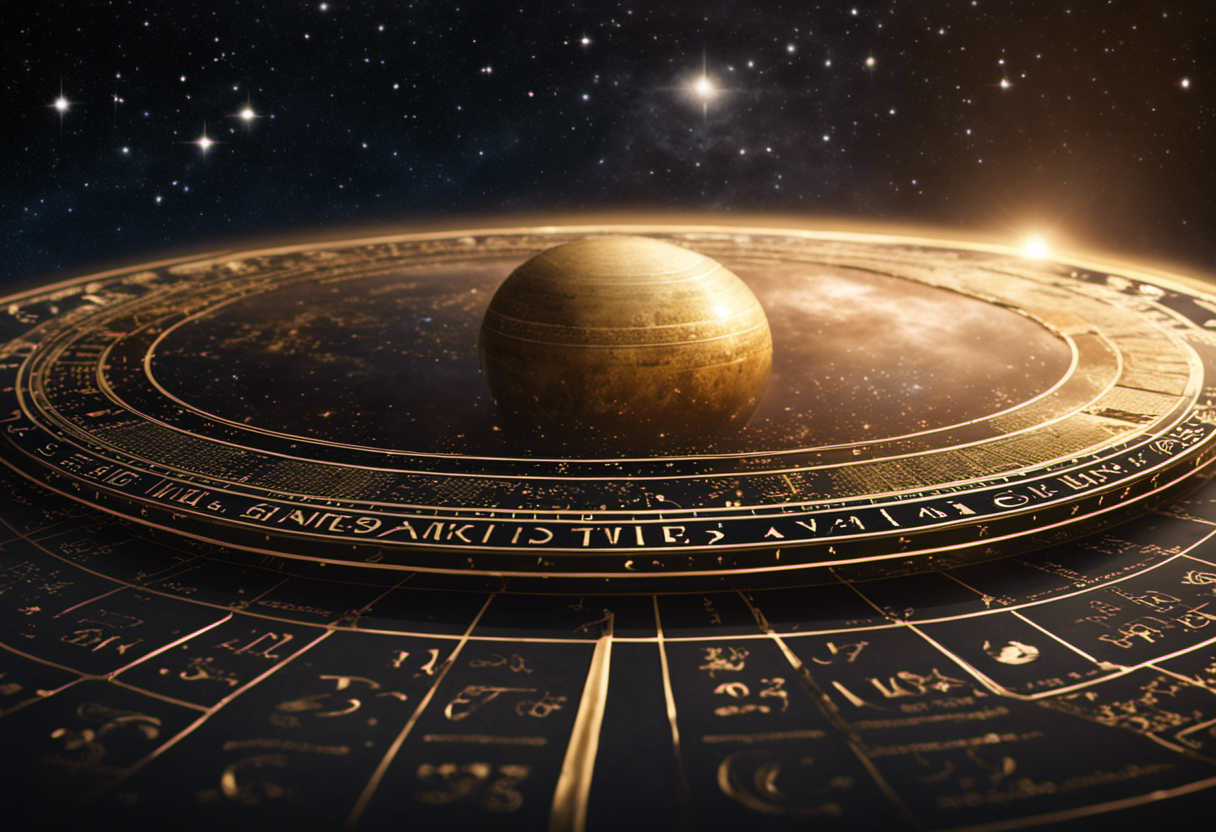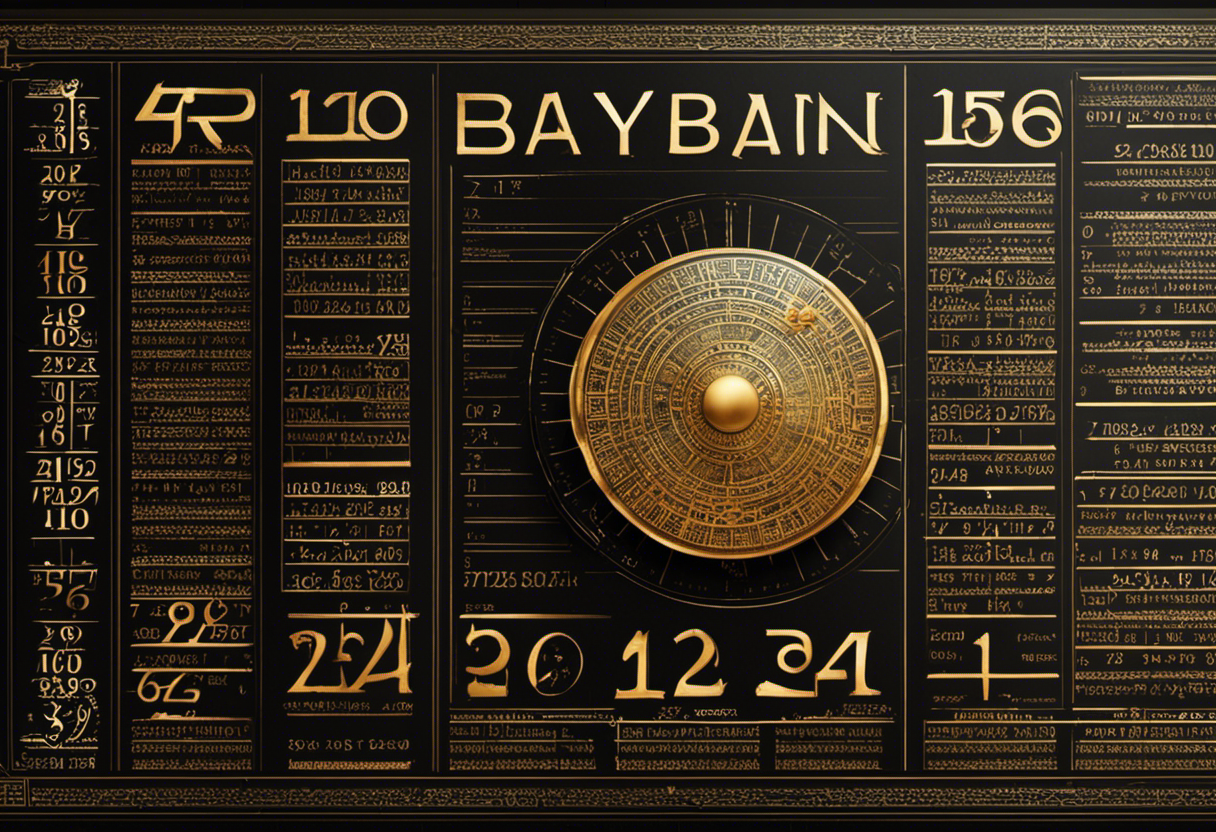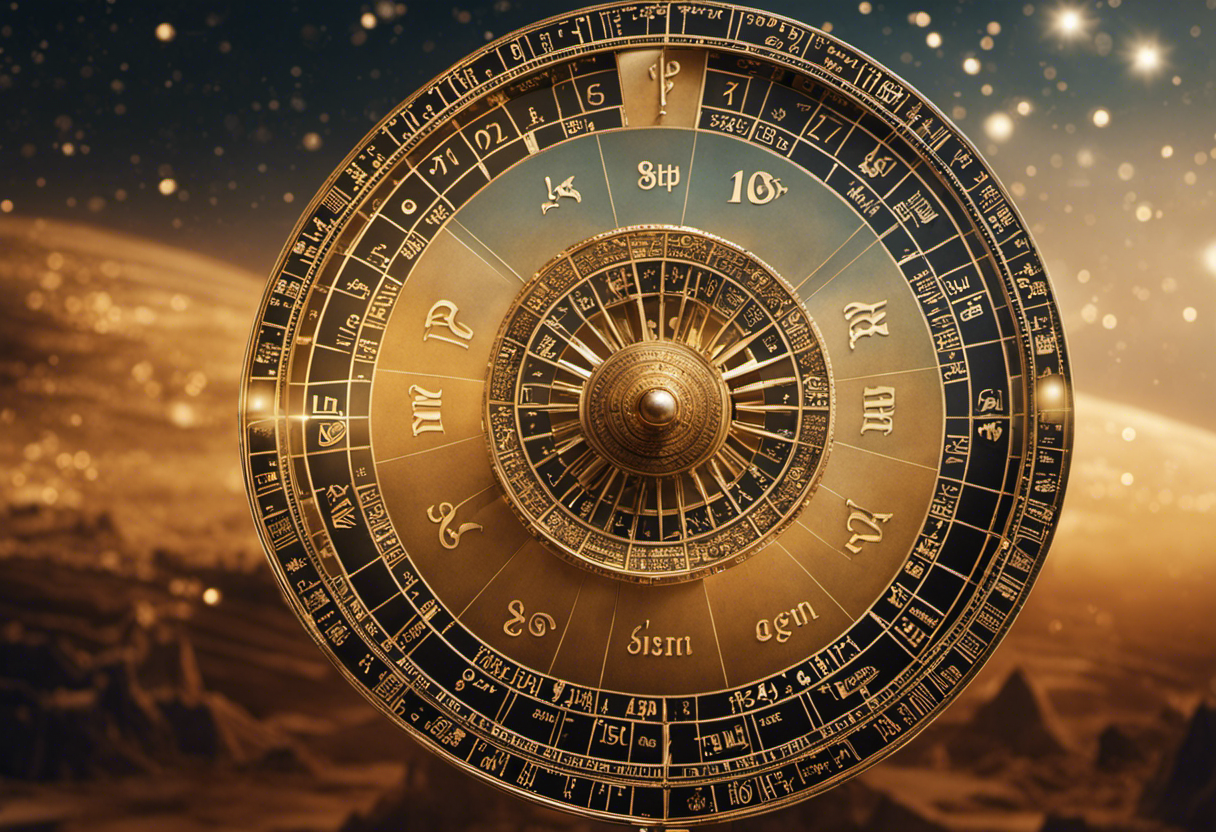In the vast tapestry of time, the Babylonian and Gregorian calendars stand as two pillars, each bearing witness to the relentless march of history.
As celestial companions, these calendars intertwine the threads of astronomy, culture, and human ingenuity.
Through a meticulous exploration of their origins, astronomical foundations, and societal implications, this article delves into the stark contrasts and remarkable similarities between the Babylonian and Gregorian calendars.
By unraveling their intricate mechanisms, we uncover the fascinating tapestry of timekeeping that has shaped our world.
Key Takeaways
- The Babylonian calendar dates back to ancient Mesopotamian civilization and was lunar-based, used for tracking seasons and planning agricultural activities.
- The Babylonians relied on astronomical calculations and observations to align their lunar calendar with the solar year, predicting celestial events like eclipses.
- The Gregorian calendar, on the other hand, is a solar-based calendar that follows Earth’s orbit around the sun and introduced leap years to account for the misalignment of lunar and solar cycles.
- While the Babylonian calendar had a significant impact on agriculture and religious observances, the Gregorian calendar standardized timekeeping globally and improved accuracy.
Origin and Development


The origin and development of the Babylonian calendar are fascinating to study, especially when comparing it to the Gregorian calendar. The Babylonian calendar, dating back to the ancient Mesopotamian civilization, had a significant influence on agriculture and religious observances.
The Babylonians, being an agrarian society, relied heavily on the calendar to plan and organize their agricultural activities. The calendar was based on a lunar system, with months consisting of 29 or 30 days, depending on the sighting of the new moon. This lunar connection allowed the Babylonians to track the seasons and determine the optimal time for planting, harvesting, and other agricultural activities. The calendar also helped them predict floods and plan irrigation systems accordingly, ensuring the success of their crops.
Additionally, the Babylonian calendar played a crucial role in religious observances. The Babylonians believed that the movements of celestial bodies had a direct impact on human affairs, including religious rituals. They used the calendar to determine the dates for religious festivals, ceremonies, and sacrifices. This ensured that these events were aligned with the cosmic forces and maximized their effectiveness.
The development of the Babylonian calendar laid the foundation for the Gregorian calendar we use today. While the Gregorian calendar is solar-based and differs significantly in structure, it owes its origins to the Babylonian system. The influence of the Babylonian calendar on agriculture and religious observances highlights its importance and impact on ancient Babylonian society.
Astronomical Basis


Studying the astronomical basis of the Babylonian calendar, which was lunar-based, and comparing it to the solar-based Gregorian calendar reveals fascinating insights into the ancient Mesopotamian civilization’s understanding of celestial movements and their influence on human affairs.
The Babylonians relied heavily on astronomical calculations and celestial observations to develop their calendar. They observed the movements of the moon, sun, and stars to determine the length of a lunar month and the number of months in a year. This knowledge was crucial for their agricultural practices, religious rituals, and governance.
The Babylonians recognized that the lunar month is approximately 29.5 days, and they devised a system of intercalation to align their calendar with the solar year. They added an extra month, known as the ‘Second Adar,’ every few years to maintain synchronization. Through their sophisticated astronomical calculations, the Babylonians were able to predict celestial events such as eclipses, which were seen as omens or signs from the gods.
In contrast, the Gregorian calendar, introduced in 1582, is a solar-based calendar that follows the Earth’s orbit around the sun. It was designed to correct the inaccuracies of the Julian calendar, which had slowly drifted from the solar year. The Gregorian calendar introduced a leap year rule to account for the extra time it takes for the Earth to complete a full orbit.
Studying the astronomical basis of these calendars allows us to appreciate the ancient Mesopotamian civilization’s advanced understanding of celestial movements and their impact on the daily lives of individuals. It highlights the importance they placed on accurate timekeeping and the role of celestial observations in their society.
Length of the Year


Babylonians’ sophisticated astronomical calculations and the Gregorian calendar’s leap year rule both aim to accurately determine the length of a year. Understanding the length of a year is essential in establishing the calendar and ensuring that it aligns with the Earth’s orbit around the Sun. Seasonal variations play a crucial role in this determination, as they mark the changes in weather patterns and the length of daylight throughout the year.
The Babylonians, who were renowned astronomers, observed the celestial bodies and developed a calendar that consisted of 12 lunar months. However, due to the misalignment between the lunar and solar cycles, their calendar fell out of sync with the seasons. This misalignment had a significant impact on agriculture, as farmers relied on accurate timing for planting and harvesting crops.
The Gregorian calendar, introduced by Pope Gregory XIII in 1582, addressed the discrepancy between the solar and lunar cycles by implementing the leap year rule. This rule states that a leap year occurs every four years, except for years that are divisible by 100 but not by 400. By accounting for the extra fraction of a day, the Gregorian calendar more accurately reflects the length of a year, reducing the seasonal variations that affect agriculture.
Leap Years and Intercalation


Intercalation and the concept of leap years help to synchronize the calendar with the Earth’s orbit, ensuring accuracy in tracking the passage of time. Leap year calculations are essential for maintaining the alignment between the calendar year and the time it takes for the Earth to complete one orbit around the Sun, which is approximately 365.2425 days. Without leap years, the calendar would gradually fall out of sync with the Earth’s orbit, resulting in historical discrepancies.
Leap years are inserted into the calendar to account for the extra fraction of a day. In the Gregorian calendar, which is widely used today, a leap year occurs every four years, except for years that are divisible by 100 but not divisible by 400. This adjustment ensures that the calendar remains accurate over centuries.
Historical discrepancies in tracking the passage of time have occurred due to variations in calendar systems used throughout history. For example, the Babylonian calendar, which dates back to around 2000 BCE, had a different method for intercalation. They added an extra month every six years to align their lunar calendar with the solar year. These differences in intercalation methods contribute to the complexity in reconciling historical dates accurately.
Months and Moon Phases


The synchronization of months with moon phases is essential for accurately tracking the lunar cycle in various calendar systems throughout history. Ancient civilizations, such as the Babylonians, recognized the significance of lunar cycles and incorporated them into their calendar systems. The Babylonian calendar was based on the lunar cycle, with each month beginning on the day of the new moon. However, the Babylonians faced challenges in aligning their calendar with the actual lunar cycle, which led to discrepancies over time.
In contrast, the Gregorian calendar, the most widely used calendar today, is a solar calendar that does not directly align with the lunar cycle. Instead, it follows the cycle of the Earth’s orbit around the Sun. While the Gregorian calendar provides a more accurate representation of the solar year, it lacks the direct connection to lunar cycles that was important to ancient civilizations.
The differences between the Babylonian and Gregorian calendars highlight the complexity of tracking lunar cycles in calendar systems. Understanding and incorporating the lunar cycle was crucial for ancient civilizations, as it helped them navigate various aspects of life, such as agriculture, religious observances, and timekeeping. Today, while the Gregorian calendar serves practical purposes, the connection to lunar cycles remains an important aspect of cultural and religious traditions in many societies.
Cultural Significance


The cultural significance of the Babylonian and Gregorian calendars can be explored through their historical implications and influence on societies throughout time. These calendars have shaped the way people perceive time and organize their lives, impacting various aspects of culture such as religious and agricultural practices.
Additionally, rituals and celebrations associated with specific calendar dates reflect the cultural values and traditions of different societies, highlighting the profound influence of these calendars on cultural practices and identity.
Historical Implications and Influence
The historical implications and influence of the Babylonian calendar on ancient civilizations cannot be underestimated. This ancient calendar system, which originated in Mesopotamia around the 2nd millennium BCE, had a profound impact on religious practices and the evolution of calendar systems.
-
The Babylonians assigned religious significance to specific days, such as the seventh day of each month being dedicated to Ishtar, the goddess of love and fertility.
-
The Babylonian calendar introduced the concept of a seven-day week, which eventually became the standard in many civilizations.
-
The Babylonians divided the year into twelve months, with each month consisting of thirty days.
-
Their use of astronomical observations and mathematical calculations to determine the length of a year greatly influenced future calendar systems.
Overall, the Babylonian calendar laid the foundation for the development and refinement of calendar systems throughout history, shaping religious practices and our understanding of time.
Rituals and Celebrations
Rituals and celebrations not only serve as a means of honoring cultural traditions but also foster a sense of belonging and unity among communities. Festivals and religious observances play a significant role in bringing people together and reinforcing their shared values and beliefs.
These events provide an opportunity for individuals to connect with their heritage, express their spirituality, and strengthen social bonds. Festivals often involve specific rituals and customs that are passed down from generation to generation, ensuring the preservation of cultural practices and knowledge. They serve as a platform for community members to come together, share stories, music, food, and engage in collective activities that promote a sense of togetherness and solidarity.
Moreover, religious observances provide individuals with a chance to deepen their faith, seek spiritual guidance, and find solace in the company of fellow believers. These rituals and celebrations are essential for maintaining cultural identity and fostering a sense of unity and belonging within communities.
Adoption and Global Influence


Adoption of the Gregorian calendar has had a significant global influence on the standardization of dates and timekeeping systems worldwide. The widespread adoption of the Gregorian calendar can be attributed to several factors:
-
Accurate timekeeping: The Gregorian calendar introduced a more accurate method of calculating the length of a year by incorporating leap years. This accuracy was crucial for various fields such as astronomy, science, and trade.
-
Cultural assimilation: As European countries embraced the Gregorian calendar, it spread to their colonies and trading partners. This adoption of the calendar became a symbol of cultural assimilation and the influence of European colonial powers.
-
Global trade and communication: The adoption of the Gregorian calendar facilitated global trade and communication by providing a standardized system for recording dates. This allowed for easier coordination and synchronization across different regions and time zones.
-
Adoption rates: The adoption of the Gregorian calendar varied across different countries and regions. Some countries, like Great Britain, adopted it quickly, while others, like Russia, resisted the change for several centuries. The varying adoption rates highlight the cultural and political factors that influenced the acceptance of the Gregorian calendar.
Overall, the adoption of the Gregorian calendar has played a crucial role in the standardization of dates and timekeeping systems worldwide, facilitating global communication, trade, and cultural assimilation.
Conclusion
In conclusion, the Babylonian calendar and the Gregorian calendar have both played significant roles in the measurement and organization of time.
While the Babylonian calendar was based on the lunar cycle and had complex intercalation methods, the Gregorian calendar, with its solar-based system and standardized months, has become the widely accepted calendar around the world.
Its adoption and global influence have greatly shaped the way we perceive and manage time.
The calendars have fascinating origins and continue to impact our lives today.



